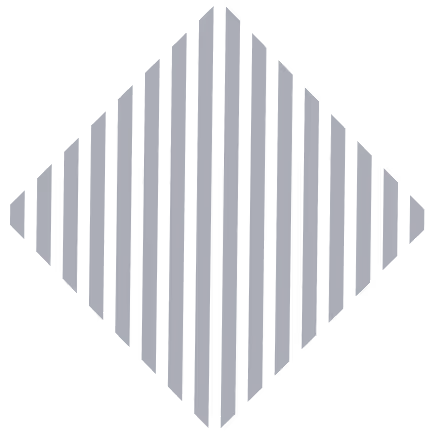Automate Candidate Screening with AI to Save Time and Find Top Talent Faster

Hiring shouldn’t feel like a never-ending cycle of resume sorting, phone screening, and ghosted interviews. If you're tired of wasting hours trying to find just one great candidate, AI screening tools might be your new best friend.
With platforms like HRMLESS, you can run interviews round the clock, rank candidates in seconds, and get top talent scheduled, without the manual hassle. No more chasing resumes or worrying about missed opportunities.
AI automation makes hiring faster, fairer, and way more scalable—and the best part? It integrates right into your current system, so your workflow stays smooth.
In this blog, we’ll walk you through:
- What AI-powered screening actually does and how it’s different
- The real benefits and use cases you can expect
- How to choose and implement the right tool without extra stress
Let’s get started!
What Is AI-Powered Candidate Screening?
AI-powered candidate screening uses smart technology to filter and assess job applicants quickly. It replaces slow, manual methods with automated processes that rank candidates and schedule interviews. This saves you time and helps pick the best applicants faster.
Traditional vs. AI-Driven Screening
Traditional screening means sorting resumes by hand and doing phone calls one by one.
It takes a lot of time and can lead to missing good candidates or unconscious bias. You often rely on gut feelings or simple checklists.
AI-driven screening uses software to analyze resumes, run interviews, and score candidates automatically. It works around the clock, so you don't have to wait. The technology can spot key skills and experiences faster and more fairly. This method reduces errors and speeds up your hiring process.
Aspect
Traditional Screening
AI-Driven Screening
Speed
Slow, manual sorting
Instant, automatic ranking
Bias
Potential unconscious bias
Bias reduction through data
Scheduling Interviews
Manual, time-consuming
Automated, reduces no-shows
Candidate Volume
Hard to handle many
Handles high volume easily
Key Components of AI Screening Tools
What makes AI screening tools so effective? It’s the way they bring multiple smart features together to simplify every stage of hiring. Let’s break it down:
- AI Pre-Screening Interviews: Candidates can complete interviews 24/7, no waiting, no scheduling conflicts. This flexibility speeds up screening and helps you catch top talent early.
- Scoring and Filtering: AI ranks candidates based on role-specific criteria like experience, certifications, and skills. It instantly highlights your best matches, so you don’t waste time on unqualified resumes.
- SMS and Email Engagement: Automated reminders keep candidates in the loop. These nudges help reduce ghosting and ensure more candidates follow through.
- ATS/HRIS Integration: Seamless syncing with your existing systems means no extra setup. Everything from scores to scheduling updates flows into your current workflow.
- Real-Time Analytics: You get a clear view of your hiring pipeline, track bottlenecks, monitor engagement, and make smarter decisions without delays.
These components work together to create an automated, organized, and easy-to-manage hiring experience in one platform.
Benefits of Leveraging Artificial Intelligence
Why are more hiring teams turning to AI? Because it delivers real, measurable results—without the stress. Here's how:
- Saves Time on Manual Tasks: AI screens resumes and conducts interviews 24/7. You eliminate hours of repetitive work and never miss top candidates, even outside business hours.
- Improves Hiring Efficiency: By automatically filtering out unqualified applicants, AI helps you focus only on well-matched candidates, no more sorting through stacks of irrelevant resumes.
- Reduces No-Shows: Automated interview scheduling and candidate nudges via SMS or email can reduce drop—off rates by as much as 50%.
- Minimizes Bias: AI evaluates candidates based on skills and data, not assumptions. This leads to a fairer hiring process and helps you build a more diverse, qualified team.
- Simplifies Your Workflow: Platforms like HRMLESS combine all these benefits into one easy-to-use system, keeping your hiring process faster, smarter, and far less stressful.
How AI Automates Candidate Screening?
AI saves you time by handling early hiring steps faster and with less effort. It breaks down resumes, filters out unqualified applicants, and evaluates skills without bias. You focus only on the best candidates.
Streamlining Resume Parsing
AI scans resumes and pulls out key details like work history, education, and skills.
It can handle many formats and layouts, so you don't waste time opening each file. Instead of manually scanning, AI organizes candidate info into clear profiles. This makes it easier to compare applicants at a glance. You get consistency, too, since the AI won't miss important data or get tired.
HRMLESS uses smart resume parsing to ensure no candidate slips through because of a simple formatting issue. This speeds up your first screening stage.
Advanced Filtering and Shortlisting
After parsing, AI applies specific rules to filter candidates based on your needs.
You set criteria like years of experience, certifications, or location, and the system narrows the list automatically. By scoring candidates on these factors, AI spots who meet your exact job requirements. This helps reduce unconscious bias and removes unqualified applicants early.
You can adjust filters anytime, letting HRMLESS quickly find the right matches. The result is a shorter, more focused candidate list ready for the next steps.
Automated Skill Assessment
AI conducts initial tests to check candidates' relevant skills. These can be quizzes, coding challenges, or personality evaluations done online at any time.
Automated assessments ensure every candidate is measured fairly and consistently. You don't have to set up manual testing or wait for results.
With this in place, only those with the skills to succeed move forward. It reduces the chances of unprepared hires and saves time on pointless interviews.
Implementing AI in Your Hiring Process
When adding AI to your hiring, focus on picking the right platform, ensuring it works with your current systems, and protecting candidate data. These steps help you speed up recruiting and avoid common issues like ghosting and bias.
Choosing the Right AI Screening Platform
Choose an AI platform that fits your hiring needs and grows with you.
Look for features like 24/7 candidate interviews, automatic scoring, and scheduling tools. These save time and reduce no-shows by engaging candidates when they are ready.
Check if the AI helps reduce bias by using consistent, job-related questions. The platform should also offer clear dashboards to track candidate progress and hiring bottlenecks. This lets you focus on talking to top candidates, not sorting through piles of resumes.
Integration with Applicant Tracking Systems
Your AI screening tool needs to work smoothly with your Applicant Tracking System (ATS). This connection keeps all candidate info in one place, so you avoid duplicate work and errors.
Integration means interviews, scores, and schedules update automatically in your ATS. You save time by skipping manual data entry and avoiding delays in communication with candidates.
Look for AI platforms that connect easily with popular ATS options through APIs or built-in plugins. This setup also helps your team stay coordinated. Everyone sees the same status updates and feedback, which speeds up decision-making.
Ensuring Data Privacy and Compliance
Handling candidate data comes with rules you must follow.
Ensure your AI vendor meets laws like GDPR or CCPA if you work with candidates in those regions.
Protect personal info with encryption and secure servers. The AI should give candidates transparency about what data it collects and how it's used.
Review vendor policies for data storage, user access controls, and compliance audits. With HRMLESS, data privacy is built in to meet strict standards. Protecting candidate info builds trust and protects your hiring process from legal issues.
Improving Recruitment Outcomes with AI
AI can help make your hiring process faster, fairer, and more effective. It reduces unconscious bias, widens your talent pool, and saves time on routine tasks. Using AI tools lets you focus on candidates who fit your roles.
Reducing Bias in Candidate Selection
AI removes many human biases by focusing on candidates' skills and experience, not on things like gender, age, or race. It scores resumes and interviews based on job-related factors only. This makes your hiring process more objective.
Automated tools use smart filters to ensure fair screening. They prevent common biases that can slip into manual reviews. This helps you build a team based on merit.
With AI, every candidate is evaluated using the same criteria. Thus, hiring decisions become consistent and less likely to be influenced by personal preferences.
Enhancing Talent Pool Diversity
AI lets you reach a wider and more diverse group of candidates.
You can quickly review many applications by automating screening and engagement without missing hidden talent. This helps you discover candidates from different backgrounds.
You can set your AI tools to look for a broad range of skills and experiences. This encourages diversity in your applicant pool. More diverse teams bring fresh ideas and improve company performance.
HRMLESS keeps candidates engaged with automated messages. This reduces early dropouts and maintains a steady flow of diverse applicants through your pipeline.
Improving Hiring Efficiency
AI speeds up tasks like screening, scheduling, and candidate follow-up.
Instead of spending hours reading resumes or sending emails, AI handles these steps in minutes. You save time and avoid delays.
For example, HRMLESS can schedule interviews automatically, reducing no-shows by letting engaged candidates pick the best time. Its AI pre-screening runs interviews around the clock so candidates can complete them when convenient.
This automation reduces your time-to-hire. It helps you fill roles faster, keep candidates interested, and avoid bottlenecks slowing recruitment.
AI Hiring Metrics That Matter
It's not just about using AI, it’s about measuring how well it performs.
To truly improve your hiring, you need to track the right metrics. These insights help you understand if the tool is saving time, reducing bias, and increasing candidate quality.
Below is a handy table of essential AI hiring metrics, what they indicate, and how they impact your recruitment process.
Metric
What It Measures
Why It Matters
Time-to-Hire
Days from job post to offer acceptance
Shorter timelines indicate AI is streamlining your process
Interview No-Show Rate
% of scheduled candidates who don’t show
Helps assess candidate engagement and scheduling efficiency
Resume-to-Interview Ratio
How many resumes lead to interviews
Reveals how accurately AI is shortlisting candidates
Offer Acceptance Rate
% of offers accepted
Indicates how well AI is matching candidates to the right roles
Candidate Satisfaction Score
Feedback from applicants
Measures experience and trust in your AI-powered process
Diversity Ratio
% of hires from underrepresented groups
Tracks if AI is supporting inclusive hiring goals
Cost-per-Hire
Total spend per successful hire
Shows how AI impacts hiring efficiency and ROI
Future Trends in AI for Candidate Screening
AI tools will soon help you predict how well candidates fit your roles and improve automatically by learning from new data. These advances will make screening faster, fairer, and more accurate.
Predictive Analytics in Hiring
Predictive analytics uses AI to find patterns in your hiring data.
It examines resumes, interview answers, and past employee success to predict which candidates will perform best.
You can use scoring models that highlight candidates most likely to succeed. This cuts down on guesswork and helps you focus on top talent quickly. Predictive tools also flag risks like high turnover early.
With HRMLESS, predictive analytics works behind the scenes to screen and rank candidates automatically. You spend less time sorting resumes and more time talking to fit candidates. Over time, models get smarter as they learn what leads to good hires in your company.
Continuous Learning and System Updates
AI systems update themselves using new data from each hire and candidate interaction.
Your screening gets sharper and more personalized without manual tuning. Continuous learning fixes blind spots like hidden biases or outdated criteria. It also adapts to new roles, industries, or market changes you face.
HRMLESS updates its AI regularly, improving candidate scoring and engagement tools. This results in better matches and fewer no-shows, keeping your hiring process smooth and allowing you to scale without extra effort.
The Bottom Line
Automating candidate screening with AI isn’t just about saving time; it’s about building a smarter, faster, and fairer hiring process.
You eliminate guesswork, reduce no-shows, and stay focused on the candidates who truly match your needs. Tools like HRMLESS help you move from resume overload to confident, data-backed decisions, without changing your workflow or losing the human touch.
Whether you’re scaling your team or simply tired of delays, AI lets you streamline hiring without the stress.
Looking to improve your time-to-hire and reduce ghosting?
Try HRMLESS to see how automation can transform your recruitment process. With the right AI tools, finding the right talent becomes faster, easier, and more effective than ever.
Frequently Asked Questions
AI screening is changing how we hire—but it's normal to have questions before switching from manual methods. Below are some insightful answers to help you better understand how this technology fits into real-world recruitment.
What benefits can AI provide in the candidate screening process?
AI saves you time by automating interviews and scoring candidates instantly. It engages applicants quickly through SMS and email, keeping the process moving. Focusing only on those who qualify improves candidate quality.
How can AI tools be integrated into existing recruitment workflows?
You can connect AI tools with your current ATS and HR systems easily. Automated scheduling removes manual work and cuts no-shows by inviting only engaged candidates. You set it up once, then let AI handle screening, messaging, and interviews nonstop.
What measures can be taken to ensure fairness and reduce bias in AI candidate screening?
Use AI tested on diverse data to avoid bias. Regularly review how the system scores candidates to catch unfair patterns. Combine AI with human checks to ensure fair and consistent decisions.
What are some best practices for training AI systems to screen job applications effectively?
Feed the AI high-quality, balanced data from past hires. Update the system regularly to reflect changes in skills and roles. Clear criteria about what makes a good candidate help AI focus on the right traits.
How are AI technologies impacting the screening process in specific industries like healthcare?
In healthcare, AI helps filter candidates who meet strict certification and skill requirements fast. It handles large applicant volumes 24/7, letting recruiters focus on clinical needs. This keeps hiring quickly without missing essential qualifications.
Can you share tips on how to optimize a resume for AI screening tools?
Use clear job titles and keywords from the job description. Avoid unusual fonts or graphics that may confuse AI. Keep formatting simple with bullet points and section headers to help AI and humans read your resume easily.
Featured
Subscribe to ournewsletter
Related posts
Explore the world of photography with our curated selection of
portfolio websites that showcase creativity and innovation.





